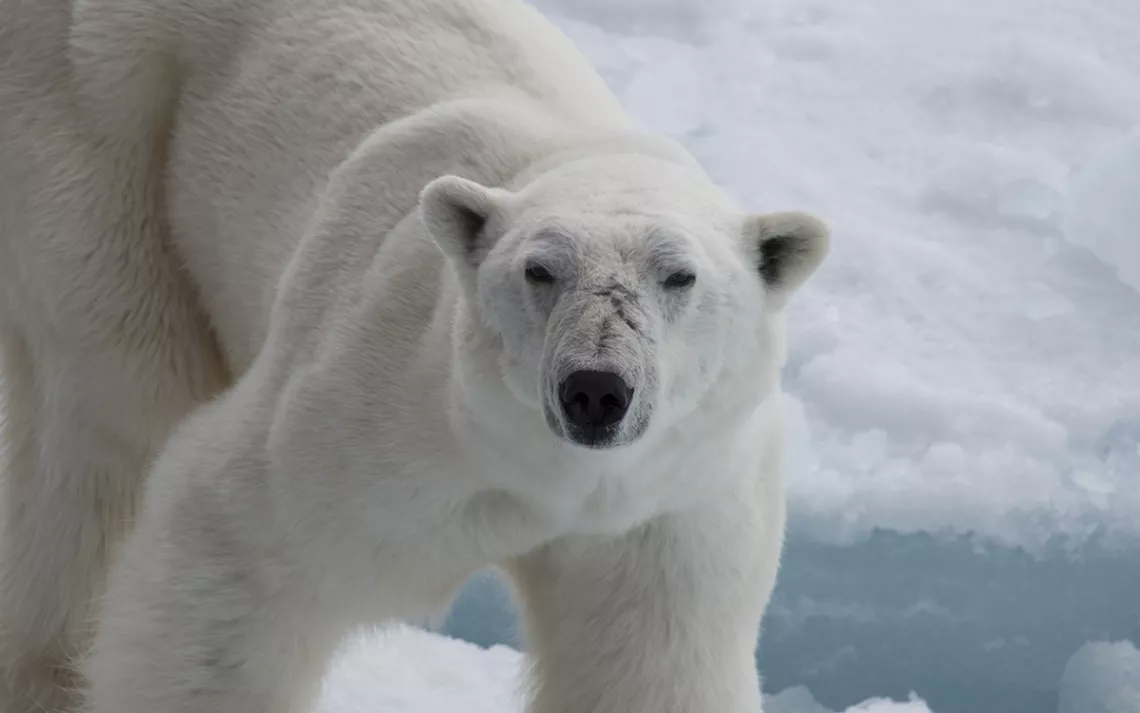Trump’s Parting Shot at the Arctic Refuge on Its 60th Anniversary
Celebrating our wildest refuge, whose fate hangs by a thread

Photo by vladsilver/iStock
Editor’s note: December 6 is the 60th anniversary of the Arctic National Wildlife Refuge, at 193 million acres the largest wildlife refuge in the nation. For decades the oil industry and its allies in Washington, DC, have sought to open its coastal plain to drilling, hoping for a mega-field that might replace the depleted deposits on Alaska’s North Slope to the west. On December 3, the Trump administration announced that it was expediting a lease sale there. If it proceeds according to plan, the auction for oil drilling rights on the plain would open on January 6, 2021, just two weeks before the inauguration of Joe Biden, who opposes drilling in the refuge.
The story below is by Michael Engelhard, author of Ice Bear: The Cultural History of an Arctic Icon. He has traveled in the Arctic Refuge for decades, sometimes as a backcountry guide.
Where tectonic upheaval flatlines and the Brooks Range runs out, infinite space welcomes the traveler like a door thrown open. Blue as the Caribbean, the Arctic Refuge’s Canning River spills our two rafts from between foothills into the coastal plain. Aufeis encases the banks where the river rose and pooled atop ice and hardened, repeatedly, into armor against spring. Water slides around graveled bends, so clear you see every cobble, so pure you drink straight from the stream, so cold it causes headaches. Once in a while, it crests into riffles or feathers into rapids.
Sipping coffee in the morning’s quiet, looking south from the top of the bluff where we pitched our tents, I notice a white lump on the bench below muscling toward camp. I cannot believe my eyes. A polar bear! When I alert them, the clients pop from their nylon cocoons like ground squirrels from their burrows, one clad in boxer shorts and a down jacket. Thirty miles from the coast, radiant among willows and heather, the bear looks more out of place here than it would in a zoo. Hunger or curiosity could have driven the bear this far inland. The previous year, sea ice—a haul-out for seals and hunting platform for the bears—shrank to the third-lowest extent on record. The bear appears healthy and fat, but if the spring ice has broken up early again, it will face a long fast.
Without a care in the world, it lies down for a nap on this rolling expanse. What is there to fear?
As far as northern species and their behavior go, we should now expect the unexpected. In the spring of 2008, Native hunters killed a polar bear near Fort Yukon, two hundred and fifty miles south of the Beaufort Sea coast. It should have been foraging on sea ice at that time of year. Its excursion was the longest inland ever recorded for an Alaska polar bear. (I only find out when we return from the trip that ours has been the southernmost polar bear sighting in the Arctic Refuge.)
Recent studies document polar bear marathon swims in the increasingly iceless southern Beaufort Sea. A GPS-collared female with her yearling offspring dog-paddled 426 miles across it, from east of Utqiaġvik almost to the Canada border. In search of an ice floe on which to rest, both spent nine days straight in barely above-freezing water. The young one did not survive. With the loss of sea ice, more bears den in snowdrifts on shore, where they become vulnerable to pathogens and to toxins and disturbances from fossil fuel extraction, including road building. At last count, the region’s sub-population numbered roughly 900 animals. Experts predict their disappearance by mid-century—and that’s not factoring in the added pressure of oil drilling.
Before long, a golden eagle strokes past the motionless, boulder-like shape. Mobbed by errant songbirds but still regal in its bearing, the raptor scrutinizes the bear. Then I catch another bright spot heading downstream. A scan with my glasses reveals a white wolf. Casting sideways glances and giving the bear a wide berth of respect, the wolf saunters over a ridge, out of sight.
Because the bear is not moving and poses no threat, I have breakfast and pack up my tent. I act as lookout while the rest of our group loads the rafts, shielded by the bluff and prevailing wind. As I contemplate Sleeping Beauty with voyeuristic unease, I realize for the umpteenth time that, out here, safety often depends on who spots whom first. Consequently, the residents of the tundra developed refined vision, hearing, and sense of smell to ensure the survival of the most sentient.
As if to drive home that point, a raft bearing two camouflaged figures comes floating around the bend. Velvety caribou antlers in the bow attest to the couple’s prowess as hunters, but they drift by with their bloody cargo, ignorant of the predator just outside their field of vision that could bump them down a notch on the food chain. I shudder to think how often I’ve courted similar disaster unknowingly.
When we finally shove into the current, two hours after the initial sighting, the bear is up and about, sniffing and pawing bushes on the bench. We steal away like thieves, abuzz with adrenaline, thrilled by the chance meeting with the great beast. Here in the Arctic Refuge it still roams free, but for how long? We find a measure of solace through seamless days in the bears’ company. How could we ever live, fully present, without them?
 The Magazine of The Sierra Club
The Magazine of The Sierra Club



